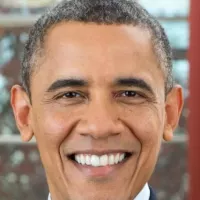Prague is the capital and largest city of the Czech Republic, historically serving as the capital of Bohemia. Situated on the Vltava River, the city boasts a population of around 1.4 million, with its metropolitan area housing roughly 2.3 million residents.
1910: German speakers decrease in Prague
By 1910, the number of German speakers in Prague had decreased to 6.7% (37,000) of the city's population.
1912: Pro peníze was filmed in Prague
In early 1912, the silent drama film Pro peníze was filmed mostly in Prague.
1930: Prague population rises to 850,000
By 1930, the population of Prague had risen to 850,000.
March 1939: Hitler orders German Army to enter Prague
In March 1939, Hitler ordered the German Army to enter Prague, proclaiming Bohemia and Moravia a German protectorate from Prague Castle.
1942: Assassination of Reinhard Heydrich in Prague
In 1942, Prague was the site of Operation Anthropoid, the assassination of Reinhard Heydrich by Czechoslovak national heroes Jozef Gabčík and Jan Kubiš. Hitler ordered bloody reprisals in response.
February 1945: Bombing raids by the US Army Air Forces in Prague
In February 1945, Prague suffered several bombing raids by the US Army Air Forces, resulting in 701 deaths, over 1,000 injuries, and the destruction of buildings, factories, and historic landmarks.
May 1945: Prague uprising against Germany
In May 1945, an uprising against Germany occurred in Prague. The 3rd Shock Army of the Red Army took the capital city almost unopposed on May 9.
1949: Fundamental change in the administrative division
Since 1949, there has been a fundamental change in the administrative division in Prague. The boundaries of many urban districts, administrative districts and city districts are independent of the boundaries of cadastral territories.
1955: World's largest Stalin Monument unveiled on Letná hill
In 1955, the world's largest Stalin Monument was unveiled on Letná hill in Prague.
1962: Stalin Monument destroyed
In 1962, the Stalin Monument in Prague was destroyed.
1963: Cyclone roller coaster was constructed
In 1963, the Cyclone roller coaster was originally constructed at the Výstaviště fairgrounds.
June 1967: 4th Czechoslovak Writers' Congress takes position against the regime
In June 1967, the 4th Czechoslovak Writers' Congress, held in Prague, took a strong position against the regime.
October 1967: Students demonstrate at Strahov
On October 31, 1967, students demonstrated at Strahov, which spurred the new secretary of the Czechoslovak Communist Party, Alexander Dubček, to proclaim a new deal.
August 1968: Warsaw Pact invasion of Prague
On August 21, 1968, member countries of the Warsaw Pact, led by the Soviet Union, invaded Czechoslovakia and its capital, Prague, to repress reforms initiated during the Prague Spring.
February 1969: Jan Zajíc commits suicide by self-immolation
In February 1969, Jan Zajíc committed suicide by self-immolation to protest against the "normalization" of Czechoslovakia.
1969: Lady Diana Cooper pronounces Prague
In 1969, Lady Diana Cooper pronounced the name of the city Prague to rhyme with "vague" on Desert Island Discs.
1974: First section of the Prague metro was put into operation
In 1974, the first section of the Prague Metro, connecting Kačerov and Florenc on Line C, was opened.
1978: First part of Line A was opened
In 1978, the first section of Metro Line A, from Dejvická to Náměstí Míru, was inaugurated.
1985: First part of line B opened
In 1985, the first part of Metro Line B, from Anděl to Florenc, was opened.
1989: Velvet Revolution crowds the streets of Prague
In 1989, after riot police beat back a peaceful student demonstration, the Velvet Revolution crowded the streets of Prague.
November 1990: Prague becomes a statutory city again
Since November 24, 1990, Prague is de facto again a statutory city, but has a specific status of the municipality and the region at the same time.
1990: Accommodation facilities in Prague
Almost one-half of the national income from tourism is spent in Prague. Most of the city's approximately 73,000 beds in accommodation facilities were built after 1990.
1990: Economic structure shifts from industrial to service-oriented
Since 1990, the economic structure of Prague has shifted from industrial to service-oriented.
1991: Military occupation of Czechoslovakia by the Red Army ends
In 1991, the military occupation of Czechoslovakia by the Red Army came to an end.
1992: Historic Centre of Prague inscribed as a UNESCO World Heritage Site
In 1992, the Historic Centre of Prague and its monuments were inscribed as a cultural UNESCO World Heritage Site.
1992: Historic center of Prague included in UNESCO list
In 1992, the historic center of Prague was included in the UNESCO list of World Heritage Sites.
1993: Prague becomes the capital city of the new Czech Republic
In 1993, after the Velvet Divorce, Prague became the capital city of the new Czech Republic.
1995: Modernization of 81-71 metro units started
Between 1995 and 2003, the 81-71M metro units, modernized versions of the Soviet Metrovagonmash 81-71, underwent complete modernization.
1996: Forum 2000 founded
In 1996, the Forum 2000 conference was founded by Václav Havel, Yōhei Sasakawa, and Elie Wiesel.
1997: Original Soviet vehicles excluded
In 1997, the original Soviet "Ečs" vehicles were retired, with one placed in the public transport museum in the Střešovice depot.
2000: IMF and World Bank summits take place in Prague
In 2000, the IMF and World Bank summits took place in Prague, and anti-globalization riots occurred.
2000: Forum 2000 objective
In 2000, the main objective of the Forum 2000 was "to identify the key issues facing civilization and to explore ways to prevent the escalation of conflicts that have religion, culture or ethnicity as their primary components", and also intends to promote democracy in non-democratic countries and to support civil society.
2000: New "Metro M1" trains since 2000
Since 2000, the new "Metro M1" trains, manufactured by a consortium of Siemens, ČKD Praha, and ADtranz, have been in operation.
2002: Prague suffers from widespread floods
In 2002, Prague suffered from widespread floods that damaged buildings and its underground transport system.
2003: Modernization of 81-71 metro units ended
Between 1995 and 2003, the 81-71M metro units, modernized versions of the Soviet Metrovagonmash 81-71, underwent complete modernization.
2005: Prague deemed among best cities
In 2005, Prague was considered one of the top three cities in Central and Eastern Europe based on The Economist's livability rankings.
2005: Regional Organiser of Prague Integrated Transport franchised operation of ferries
Since 2005, the Regional Organiser of Prague Integrated Transport (ROPID) has managed ferry operations on the Vltava River as part of the public transport system.
2008: Researchers in Prague
As of 2008, Prague had 13,000 researchers, which represents 3% of the city's economically active population, and gross expenditure on research and development accounted for €901.3 million.
2008: Allegro restaurant received the first Michelin star
In 2008, the Allegro restaurant received the first Michelin star in the whole of the post-Communist part of Central Europe.
April 2009: President Obama's speech in Prague
In April 2009, Prague hosted U.S. President Barack Obama's speech, which led to the New START treaty with Russia.
June 2009: Prague cancels bid for 2020 Summer Olympics
In June 2009, Prague's officials chose to cancel the city's planned bid for the 2020 Summer Olympics due to financial pressures from the global recession.
March 2010: Foreign workers in Prague
As of March 2010, 148,035 foreign workers were reported to be living in Prague, making up about 18 per cent of the workforce, up from 131,132 in 2008.
April 2010: New START treaty signed in Prague
On April 8, 2010, the New START treaty between the U.S. and Russia was signed in Prague.
2010: Prague named a top-tier nexus city for innovation
In 2010, Prague was recognized as a top-tier nexus city for innovation across various global sectors, ranking 29th out of 289 cities, surpassing Brussels and Helsinki.
2010: Prague named best city in CEE for business
In a 2010 survey, Prague was named the best city in Central and Eastern Europe (CEE) for business.
2011: Political makeup of the Prague City Assembly
As of Dec. 20, 2011, 18 members of the council were from the centre-right Together Prague group, which governs the city in conjunction with 12 members of the Pirates (centre to centre-left) and 5 members of the Mayors and Independents group (centre to centre-right).
2011: Official population of Prague
As of the 2011 census, the official population of Prague hovers around 1.3 million, but data taken from mobile phone movements around the city suggest that the real population of Prague is closer to 1.9 or 2.0 million, with an additional 300,000 to 400,000 commuters.
2011: Allegro restaurant lost its Michelin star
In 2011, the Allegro restaurant lost the first Michelin star in the whole of the post-Communist part of Central Europe, which it had been awarded in 2008.
2012: Prague Metro system served 589.2 million passengers
In 2012, the Prague Metro system transported 589.2 million passengers, making it the fifth busiest in Europe and the most-patronized per capita globally.
2014: Companies with highest turnover in the region
In 2014, companies in Prague region had the highest turnover.
April 2015: Extension of green line A finished
In April 2015, the extension of the green line A was completed, providing new access to the airport bus at Nádraží Veleslavín and direct access to Nemocnice Motol (Motol Hospital).
December 2016: Galileo system started providing its first services
In December 2016, Prague began hosting the administration of the EU's Galileo satellite navigation system, which started providing its initial services.
2016: Prague fails to make the candidate city shortlist for the 2016 Summer Olympics
In 2016, Prague launched a bid for the Summer Olympics but failed to make the candidate city shortlist.
2016: Prague ranked sixth in the Tripadvisor world list
In 2016, Prague secured the sixth position on Tripadvisor's global list of best destinations.
2017: Prague receives over 8.4 million international visitors
As of 2017, Prague attracts more than 8.4 million international visitors annually.
2017: Na příkopě ranked among the most expensive streets in the world
In 2017, Na příkopě was the most expensive street among the V4 countries, ranking 22nd globally with a rent of €2,640 per square meter per year.
2017: Prague's transport modal share
In 2017, Prague's transport modal share was primarily public transport (52%), followed by car (24.5%), walking (22.4%), bicycle (0.4%), and airplane (0.5%).
2018: Michelin-starred restaurants in Prague
As of 2018, there were just two Michelin-starred restaurants in Prague: La Degustation Bohême Bourgeoise and Field.
2018: People commute by bike in Prague
In 2018, between 1% and 2.5% of people in Prague commuted by bike, depending on the season.
2018: Cyclone roller coaster was removed
In 2018, the Cyclone roller coaster was removed due to urban revitalization plans.
2019: Total of 194 km of protected cycle paths and routes
As of 2019, Prague had 194 km of protected cycle paths and routes, along with 50 km of bike lanes and 26 km of bus lanes accessible to cyclists.
2019: Institute for Clinical and Experimental Medicine was largest transplant center
As of 2019, the Institute for Clinical and Experimental Medicine in Prague was the largest transplant center in Europe.
2019: PICSA Index ranks Prague as 13th most livable city
In 2019, the PICSA Index ranked Prague as the 13th most livable city in the world.
2020: Expected full completion of Galileo
By 2020, full completion of the Galileo system was expected.
2020: Average salaries available in Prague
In 4Q/2020, during the pandemic, average salaries available in Prague reached CZK 45.944 (≈€1,800) per month, an annual increase of 4%, which was nevertheless lower than national increase of 6.5% both in nominal and real terms.
2020: Prague cancels bid for 2020 Summer Olympics
In June 2009, Prague's officials chose to cancel the city's planned bid for the 2020 Summer Olympics due to financial pressures from the global recession.
August 2021: Free public transport for certain age groups
Since August 2021, individuals up to 14 years and over 65 years old can use Prague's public transport free of charge with proof of age.
2021: Prague's economy accounts for 25% of the Czech GDP
As of 2021, Prague's economy accounts for 25% of the Czech GDP, and its GDP per capita in purchasing power standard is €58,216.
2021: Prague ranked 7th in the world ICCA Destination Performance Index
In 2021, Prague was ranked 7th in the ICCA Destination Performance Index, which measures the performance of conference tourism.
2022: Extension of bus lines with trolley bus lines
As of 2022, bus lines in Prague are being expanded with trolley bus lines.
2022: Metro Line D under construction
As of 2022, the fourth Metro line, Line D, is under construction to link the city center with southern areas.
2022: 27 Michelin-starred restaurants in Prague
As of 2022, there are 27 Michelin-starred restaurants in Prague which still include La Degustation Bohême Bourgeoise and Field.
December 2023: Mass shooting at Charles University in Prague
In December 2023, a mass shooting occurred at Charles University in central Prague, resulting in 15 deaths and 25 injuries, marking the deadliest mass murder in the Czech Republic's history.
2023: Prague visited by over 7.4 million guests
In 2023, Prague welcomed 7,442,614 guests who stayed overnight, with 78.8% originating from abroad.
2023: Most visited tourist destinations of Prague
In 2023, Prague's most visited tourist destinations included...
2023: Prague has second best public transport system in the world
In 2023, according to TimeOut magazine’s survey, Prague has the second best public transport system in the world.
December 2024: Prague ranked 3rd among the best places to visit during Christmas
In December 2024, Prague was ranked 3rd among the best places to visit during Christmas.
2024: Four companies providing bicycle sharing in Prague
As of 2024, Prague has four companies offering bicycle sharing: Rekola (1,000 bikes), Nextbike (1,000 bikes), Bolt, and Lime.
March 2025: Foreign residents in Prague
As of 31 March 2025, there were 351,734 foreign residents in Prague, of which 132,170 with permanent residence in Prague.
April 15, 2025: Renovated Cyclone featured at Matějská pouť
On April 15, 2025, the renovated Cyclone roller coaster will be featured at this year's Matějská pouť.
2028: Expected completion of Metro Line D
In 2028, the Metro Line D is expected to be completed.
Mentioned in this timeline

Instagram is a photo and video-sharing social networking service owned...

Google LLC is a multinational technology company specializing in online...

Barack Obama the th U S President - was the...
The Union of Soviet Socialist Republics USSR existed from to...

Christmas is an annual festival celebrated on December th commemorating...
Germany officially the Federal Republic of Germany is a Western...
Trending

Jermaine Demetrius Burton is an American professional football wide receiver and return specialist currently playing for the Cincinnati Bengals of...

7 months ago Paolo Banchero's NBA Journey: Overcoming Injury, Praising Teammates, and Hope for the Future

6 months ago Julia Fox Ditches Beauty Trend, Net Worth Soars: An 'It Girl' in 2025

1 month ago Jayden Reed Injury Update: Packers WR Setback and Recovery Timeline

14 days ago Scott Bessent Predicts Oil Price Drop Contingent on Venezuelan Events; Gas Prices Impacted.
4 days ago David Corenswet Visits Alma Mater; Brainiac Shortlist Includes Bang, Smith, and Rockwell
Popular
Matt and Ross Duffer known as the Duffer Brothers are...
Aftyn Alyssa Behn is an American politician currently serving as...

Candace Owens is an American conservative political commentator and author...

XXXTentacion born Jahseh Dwayne Ricardo Onfroy was a controversial yet...

Ilhan Omar is an American politician currently serving as the...

Lane Kiffin is an American football coach currently serving as...